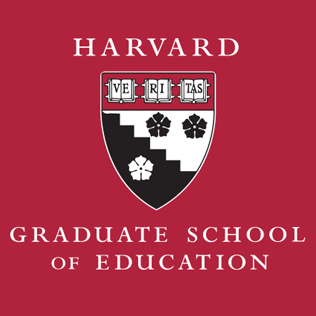Website
Countr(ies)
Young Engineers is operating in more than 30 countries worldwide, including Australia, North & South America, Africa, and Europe.
Grade Level of Students Participating
Grades Pre-K to 8
Number of Students Participating per Year
20,000 worldwide
Year Organization Began
2008
Relationship to the public education system
Works as a franchise-based model outside of public education system. Offered through after-school classes. Approved by Ministries of Education worldwide.
Organization’s Vision and Mission
Vision: “Our initiative has always been to establish an original and unparalleled approach to assisting the engineers of tomorrow by creating engaging educational solutions early on. We seek to offer every child in the world the opportunity and confidence to enter a challenging world by providing an encouraging, hands-on environment for developing the necessary skill set.”
Mission: "Make students passionate about innovation and creativity by encouraging independent learning experience to ensure a strong and sustainable society."
Brief Description of Program Activities
Classes are run in weekly sessions over a 10-month period and range from 45-90 minutes per class meeting. Here is a brief overview of some of the courses. Please visit the website to learn more about these and other programs offered by Young Engineers.
Big Builders (pre-K to 1st grade): The course will provide a hands-on educational experience - discovering basic engineering solutions. The course exposes children to engineering terminology, as well as terms taken from the animal kingdom, science and their current world. Children will develop self-learning skills, both in terms of building technique and knowledge. In addition, the children will develop communication skills while learning and playing with their friends.
Examples of topics covered in Big Builders:
- Construction and Mathematical Terms (ex: shapes, polygons, parts of a whole, moveable vs. rigid)
- Learning Abstract Terms (ex: imagination, friendship, belonging)
- Learning Natural Processes (ex: camouflage, migration, pollination, biological pest control, cycle of life).
- Physical Terms and Forces (ex: centrifugal force, gravity, torque, fulcrum, stability, friction, momentum, mechanical energy, balance, compaction, drive).
LEGO Challenge (2nd & 3rd grade students): The main goal of the course is to illustrate content through stories and demonstrations. Students will learn math and physical principles through intuitive study and develop their independent learning while improving their building skills. The course will provide mathematical integration between physical laws and the simple calculations to support them. The laws and mathematics are both illustrated through the construction of LEGO® models. Once the concepts have been demonstrated, students build the LEGO® models which provides experiential learning and reinforces the lessons topic. To carry out the building process, students receive a tailor made kit developed by Young Engineers.
Examples of topics covered in LEGO Challenge:
- Basic and Complex Mathematical Operations: The integration between planning and building the model involves the calculation
- Introducing Philosophers and Theoreticians: Archimedes, Newton, Da Vinci, etc.
- Physical Forces and Laws (ex: centrifugal force, centripetal force, force of inertia)
RoboLEGO (6th grade): The course develops algorithmic thinking and program implementation, using the LEGO® WeDo graphic programming. During each lesson, students will build a robot using LEGO® parts and program it according to the required functionality. Most programming tasks will be performed using English terms. The course objective is achieved when the students design a software and mechanical engineering project, study its market and use rhetorical methods to make a successful presentation to investors.
Examples of topics covered in RoboLEGO:
- Education on the world of robotics
- Software and Mechanical Engineering principles (ex: algorithm planning, flow charts, different output implementations, etc.).
- Introduction to Entrepreneurship (ex: market study, product page, how Google works, Microsoft Power Point, rhetorical methods).
Program Content: Intrapersonal Competencies
Sense of self-efficacy, independent thinking skills, career orientation, self-confidence, entrepreneurial mindset, planning and management skills,
Program Content: Interpersonal Competencies
Develop social connections, as well as communication and interpersonal work skills. Develop a sense of social belonging, improve expression capabilities, cooperation in groups
Program Content: Cognitive Competencies
Problem solving skills, creative thinking, high order thinking skills, procedural thinking, critical thinking.
Program Content: Attitudes and Values
Children understand that in order to progress in games they must understand the rules and persevere. On Young Engineers children realize that they need engineering understanding to improve their skills and to be successful in the game.
Program Content: Pedagogy/ Active Engagement of Students
Young Engineers uses Spiral Learning and PBL to develop programs. The acronym “PBL” refers to three distinct methods aimed toward independent learning:
Problem Based Learning: By the end of the building experience, the teacher challenges the child by asking him/her to enhance the model to solve a problem related to the lesson topic.
Project Based Learning: Planning and executing a project from start to finish, students have opportunities to improve teamwork and skills at presentation and organization.
Product Based Learning: By the end of each lesson, students succeed in creating a product related to the lesson’s principle.
Source of Information
1All information for this summary come from the Young Engineers website, the Young Engineers 2015 Franchise Report, a report provided by the organization and a Skype conversation with the President in June 2016.
Prepared by
Ashim Shanker


